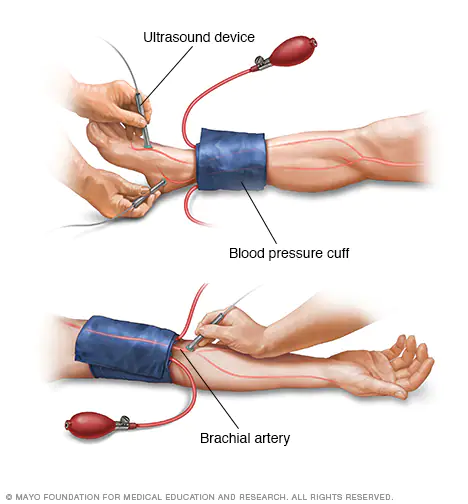There are two tests we use to evaluate the health of the peripheral arteries, the vessels that supply oxygenated blood to the legs and arms. Like the coronary arteries, these can become clogged by plaques that restrict or block blood flow. PAD testing is commonly ordered when one has health problems that increase risk for PAD and/or when one has symptoms of PAD. Common symptoms of PAD include leg/calf pain while walking that subsides when at rest, or numbness, tingling, or unusual temperature differences in the extremities.
Peripheral Arterial Disease (PAD) Testing

Ankle Brachial Index (ABI) Evaluation: An initial PAD screening test that uses a specialized device that simultaneously measures the blood pressure in your ankles and wrists. If the blood pressure in the legs does not correspond to that in the arms, it may indicate that plaques are restricting blood flow in the legs.
Lower Extremity Doppler: This test produces a more in-depth study of the health of the blood vessels in the legs. Using ultrasound technology, this non-invasive procedure produces sonogram imaging of the arteries in the legs. The sonogram shows if there is arterial plaque build-up and reduced blood flow through the legs.

